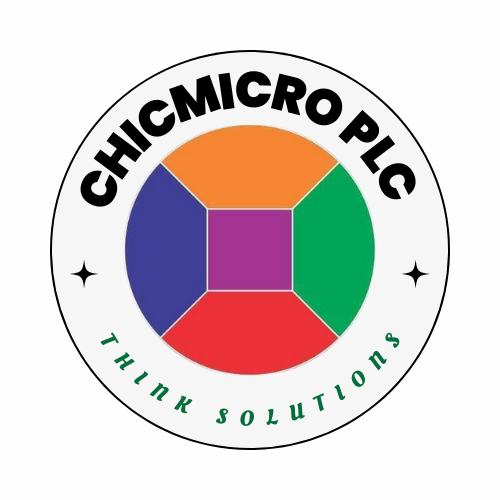
Introduction to Website Monetization
In today’s digital landscape, a website serves as a pivotal tool for individuals and businesses alike, offering an array of opportunities for monetization. With the rapid growth of internet usage, having an online presence has become essential not only for branding but also for generating income. Website monetization refers to the strategies and methods employed to convert website traffic into revenue. As more consumers engage with online content, the potential for transforming a website into a profitable venture grows exponentially.
The shift towards online businesses has seen a diversification of income-generating strategies. From affiliate marketing, where website owners earn commissions by promoting other companies’ products, to display advertising that presents ads to visitors, the options for monetizing a website are numerous. Additionally, many creators turn their skills and expertise into opportunities by offering services such as consulting, coaching, or selling digital products, like e-books or online courses. Each of these approaches emphasizes catering to an audience and effectively leveraging the traffic that a website can attract.
Furthermore, the current trends toward content consumption have ushered in a new era of website monetization. The integration of social media and marketing channels boosts traffic and engagement, making it feasible for website owners to implement various income strategies. With growing audiences, websites can thrive through sponsorships, advertisements, or subscription models. The emphasis on providing valuable content while identifying target audiences is crucial in navigating the complexities of website monetization. Implementing the right strategy not only maximizes revenue potential but also strengthens the overall user experience, creating a win-win for both the content creator and their audience.
Selling Products Through E-commerce
Establishing an e-commerce website offers a robust opportunity to generate revenue by selling products online. Various e-commerce platforms, such as Shopify, WooCommerce, and Magento, facilitate entrepreneurs to create their online stores seamlessly. Each of these platforms has its unique features that cater to different business needs, allowing users to choose one that aligns with their goals.
Inventory management is crucial in running a successful online store. Maintaining optimal stock levels helps prevent stockouts that could frustrate customers. Using inventory management software can streamline this process, enabling real-time tracking of stock and facilitating effective reordering. Additionally, it is essential to develop competitive pricing strategies to attract customers. Researching competitors can provide valuable insights, allowing you to set prices that reflect the market while ensuring profitability.
User experience (UX) significantly impacts conversion rates in e-commerce. An intuitive website layout, fast loading speeds, and a secure checkout process can enhance user engagement. Investing in professional web design can create an appealing storefront that keeps potential buyers interested. Moreover, offering multiple payment options increases convenience for customers and can lead to higher sales rates.
Attracting customers to your e-commerce site requires effective marketing strategies. Utilizing search engine optimization (SEO) techniques, such as integrating relevant keywords, can enhance visibility on search engines and drive organic traffic. Beyond SEO, consider leveraging social media marketing, email campaigns, and influencer partnerships to broaden your reach.
Efficient management of shipping and return processes is also vital to create a seamless shopping experience. Offering clear shipping policies and return options not only builds trust but also encourages repeat business. Overall, successfully selling products through e-commerce involves a combination of the right platform, effective management strategies, and a customer-centric approach that enhances the shopping experience.
Creating Informative Content: Blogging and Affiliate Marketing
Creating informative content is a cornerstone of any successful website aiming to monetize its efforts. By focusing on blogging, website owners can establish a strong online presence, drive traffic, and attract a targeted audience. The essence of effective blogging lies in providing value to readers through well-researched, engaging, and relevant content. When visitors find informative content that resonates with their interests or needs, they are more likely to return, share, and engage with the site, creating a cycle of growth and interaction.
Search engine optimization (SEO) plays a crucial role in the visibility of a blog. By strategically utilizing SEO techniques, website owners can enhance their content’s ranking on search engine results pages, making it easier for readers to discover their posts. This can include employing relevant keywords, optimizing meta tags, and ensuring that the site has a robust internal linking structure. The aim is to create content that not only engages readers but also meets the criteria set by search engines for high-quality material.
Another avenue to consider is affiliate marketing, which allows bloggers to earn commissions by promoting products or services that align with their content. When recommending these products, it is essential to choose those that add real value to the readers, ensuring that the recommendations feel authentic. This strategy can be seamlessly integrated into blog posts by providing thorough reviews or incorporating affiliate links naturally within the content. Selecting a specific niche can further help streamline the focus and tone of the content, enabling the creation of quality posts that address the needs of a specific audience, ultimately leading to increased traffic and potential revenue.
Entertaining Subscribers: Video and Podcasting Platforms
In the modern digital landscape, leveraging various media formats such as video and audio has become increasingly important for engaging an audience. Platforms like YouTube for video content and Spotify or Apple Podcasts for podcasting provide creators with opportunities to reach a broader audience. These platforms enable content creators to entertain subscribers through compelling storytelling, informative discussions, and engaging visual content.
Creating engaging video content or podcasts starts with understanding your target audience. Identifying interests, preferences, and pain points is crucial. This knowledge allows content creators to tailor their offerings, ensuring they resonate with subscribers. Once a niche has been defined, creators can brainstorm content ideas, focusing on themes that capture viewer or listener interest. Consistency in publishing schedules is another essential strategy, as regular uploads can significantly contribute to audience retention and growth.
Building a subscriber base requires active engagement across platforms. Promoting content on social media, creating interactive posts, and responding to audience feedback cultivates a community atmosphere. Collaborating with other content creators can also amplify outreach efforts; partnerships help in cross-promotion and expose creators to new audiences. Additionally, showing authenticity and a genuine passion for the content can enhance viewer or listener loyalty, fostering a dedicated subscriber base over time.
Monetization options for video and podcasting platforms are versatile. Creators can explore avenues such as sponsored content, merchandise sales, and affiliate marketing. Paid subscriptions and membership features offered by many platforms allow devoted subscribers to gain access to exclusive content, thereby creating a steady revenue stream. Through thoughtful content creation and strategic marketing practices, entertaining subscribers via video and podcasting platforms can prove to be a profitable venture, transforming a passion into a sustainable income source.
Leveraging Advertising on Your Website
Monetizing a website through advertising is a highly effective strategy for generating revenue. One of the most prominent ad networks available for website owners is Google AdSense. This platform allows you to display ads that are relevant to your content and audience, thereby increasing the likelihood of engagement. Other advertising networks, such as Media.net, Amazon Affiliates, and AdThrive, offer diverse ad formats and targeting options, enabling you to select the one that aligns with your website’s niche and audience demographics.
When considering different types of advertising, website owners typically encounter display ads, native ads, and affiliate marketing options. Display ads, often found in banners or sidebars, can be visually appealing but may detract from the user experience if overused. Native ads, on the other hand, blend seamlessly with site content, providing an unobtrusive experience for visitors, which often leads to higher engagement rates. Affiliate marketing involves promoting a company’s products or services and earning commissions for referred sales, allowing for more passive income opportunities.
To ensure successful monetization through advertising, it is crucial to track key performance indicators (KPIs) such as click-through rates (CTR), cost per click (CPC), and overall ad impressions. Monitoring these metrics enables website owners to assess which ads perform well and which need optimization. Balancing user experience and ad placement is essential; overly intrusive advertisements can lead to a high bounce rate and dissatisfied visitors. A carefully planned advertising strategy, focusing on relevant and well-placed ads, will likely yield better results without compromising the site’s aesthetics or functionality.
Sponsored Posts and Partnership Opportunities
Monetizing a website through sponsored posts and partnership opportunities can be a lucrative approach for content creators and business owners alike. Developing a strategy to attract sponsors begins with ensuring that your website offers valuable, high-quality content that resonates with a specific audience. Brands are often looking for platforms that align with their target demographic, and having a niche can significantly enhance your appeal to potential sponsors.
One effective strategy to attract sponsorships is to clearly define your website’s audience in terms of demographics, interests, and online behaviors. This clarity allows brands to see the potential reach and engagement they could gain from collaborating with you. Utilizing social media platforms to amplify your website’s content can also improve visibility, attracting sponsors who value the organic reach you can provide.
When it comes to creating sponsored posts, the priority should be on maintaining authenticity. Sponsors want their brands to be effectively represented, but it is crucial not to compromise the trust you have established with your audience. To achieve a balance, ensure that sponsored content aligns seamlessly with the existing tone and theme of your site. Incorporating personal anecdotes and insights can help create a more relatable connection, making it easier for your audience to resonate with the sponsored product or service.
Additionally, it can be beneficial to establish long-term partnerships with brands rather than one-off collaborations. This can lead to more consistent income and a stronger association between your platform and the partnered brand. However, a commitment to transparency is essential; always disclose sponsored content to your audience, adhering to ethical marketing practices. This fosters trust and ensures that your sponsored posts contribute positively to the overall integrity of your website.
Asking for Donations: Crowdfunding and Membership Models
In the digital era, websites can generate income through various fundraising strategies, notably via crowdfunding and membership models. Crowdfunding involves soliciting small contributions from a large number of individuals, effectively pooling resources to fund specific projects or initiatives. This method can be particularly beneficial for creative ventures, startups, or charitable causes. To successfully implement crowdfunding on your website, it is essential to clearly communicate the purpose of your campaign and demonstrate how the funds will be utilized. Utilizing platforms such as Kickstarter or GoFundMe can enhance visibility and facilitate a structured donation process.
On the other hand, membership models focus on offering exclusive content or services to subscribers in exchange for a recurring fee. This could include access to premium articles, detailed reports, or members-only forums for discussion and engagement. It is crucial to create tangible value for subscribers, ensuring that the benefits justify their investment. Tailoring content to meet the interests of your target audience can significantly improve retention rates and foster a loyal community.
Implementing donation options on a website requires thoughtful placement and clear calls to action. Making the process simple and user-friendly is vital, as complicated procedures can deter potential supporters. Employing payment processors like PayPal or Stripe can streamline the transaction process, making it seamless for donors.
However, ethical considerations must be taken into account when asking for donations. Transparency is paramount; donors should be informed about how their contributions will impact your projects. Furthermore, it’s important to maintain a balance between fundraising and providing free content to ensure that your audience does not feel exploited. By fostering trust and demonstrating genuine value, asking for donations can be a sustainable and responsible means to support your website’s initiatives.
Building an Engaged Community: The Value of Email Marketing
Creating a robust and engaged community around your website is essential for sustained success in the digital landscape. One of the most effective strategies for achieving this goal is through email marketing. By leveraging email marketing, website owners can establish direct lines of communication with their audience, providing valuable content and nurturing relationships over time.
Building an email list should be a top priority for any website owner aiming to monetize their site effectively. This list serves as a database of individuals who have shown interest in your content, products, or services, and are willing to receive updates from you. Effective ways to grow your email list include offering free resources, such as eBooks or exclusive content, in exchange for subscribers’ email addresses. Creating enticing signup forms that are strategically placed on your website can significantly increase conversion rates.
Once you have established a list, it is crucial to use newsletters strategically. Regular newsletters keep your community informed about the latest offerings, blog posts, and industry news, providing them with a reason to remain engaged. This continuous engagement fosters loyalty among subscribers, who may become your most ardent supporters and advocates. Additionally, incorporating product recommendations or promotional offers in your newsletters can lead to higher conversion rates, effectively turning your engaged community into potential customers.
Engagement strategies should not solely focus on promoting products; instead, consider crafting valuable content that caters to the interests of your audience. Polls, surveys, and feedback requests can help in understanding subscriber preferences, allowing for tailored content that resonates with their needs. This two-way interaction not only strengthens community bonds but also enhances email marketing efforts, leading to continued website growth and monetization opportunities.
Conclusion
In this comprehensive guide, we have explored a myriad of strategies available for monetizing a website effectively. From affiliate marketing to subscription-based services, various approaches can cater to different niches and audience preferences, enabling website owners to capitalize on their online presence. Each method has its inherent advantages and challenges, making it imperative for individuals to select strategies that align with their specific goals and the nature of their website.
Affiliate marketing emerges as a popular choice for many website owners due to its relatively low barrier to entry. By promoting third-party products or services, website owners can earn a commission for each sale generated through their unique referral links. However, it requires careful selection of partners to ensure that the offerings resonate with the audience to maintain their trust and engagement.
Another effective monetization strategy includes the creation and offering of digital products, such as eBooks, online courses, or software. This method not only allows for higher profit margins compared to selling physical products but also positions the website owner as an authority in their niche, fostering a loyal customer base.
Display advertising, whether through networks like Google AdSense or direct sponsorships, represents yet another avenue for generating income. While it can provide a steady revenue stream, success hinges on achieving significant traffic levels and target audience engagement.
Moreover, combining various strategies, such as membership programs, paid newsletters, or sponsored content, can diversify income sources and create a more resilient financial model for a website. This multifaceted approach may yield better results than relying solely on one method.
As we conclude this guide, it is crucial to emphasize that monetization is a journey that requires continuous experimentation and adaptation. Each website’s unique context and audience will ultimately shape the most effective strategies, and success will likely take time and perseverance.



